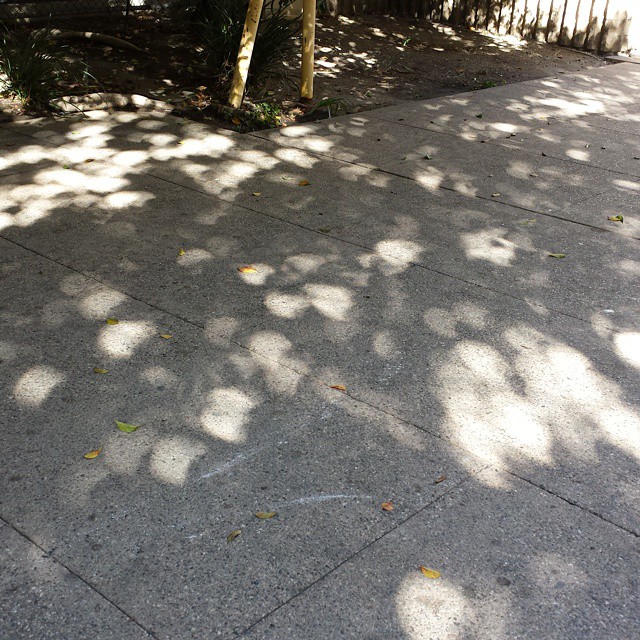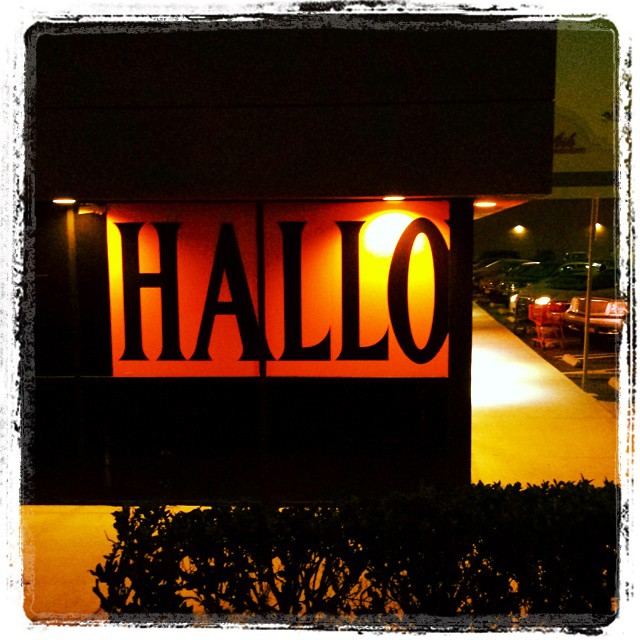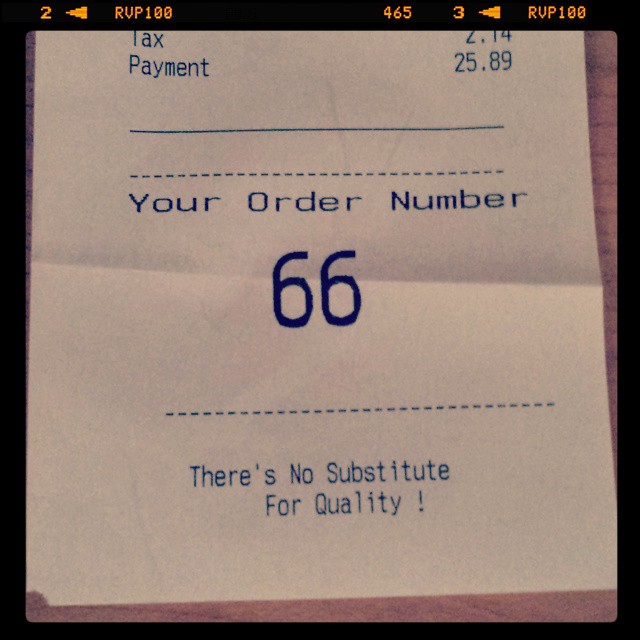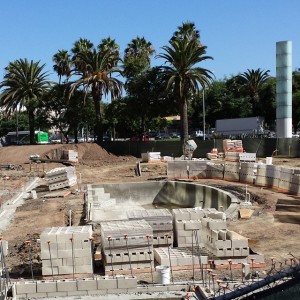
No soliciting of zombies is allowed. And definitely no soliciting by zombies!
(This was on the entrance to SF/mystery independent bookstore Mysterious Galaxy back when they had a second location up in the LA area.)

No soliciting of zombies is allowed. And definitely no soliciting by zombies!
(This was on the entrance to SF/mystery independent bookstore Mysterious Galaxy back when they had a second location up in the LA area.)
I literally found out yesterday about today’s partial solar eclipse. Unlike the last one visible from Southern California in 2012, which was conveniently on a weekend, this ended up being right in the middle of the work day. Add in a lot of other stuff going on, and I didn’t have time to do anything like go out to a prime viewing spot or make a giant pinhole camera.
My original plan was to take a late lunch, see what I could see, then try to head back outside at the point of greatest eclipse. I sat on a bench in the courtyard, surrounded by trees, checking a tiny pinhole camera I’d made from a tea box at the last minute and also looking for a good spot with images projected through the tree leaves.
After about half an hour I started to wonder why I wasn’t seeing any signs of eclipse, and looked up the times again. Apparently the calculator I used didn’t account for daylight saving time. The good thing about that: I was early, not late. The bad thing: Greatest eclipse was actually going to be during/shortly after a production switchover at work that I needed to be on hand for.
So I headed back outside around 2:50 to look at the clusters of eclipsed suns projected by the leaves in the shady courtyard.

It was a late-summer heat wave, and while the picnic itself was spread out in the shade beneath some trees, it was over 100 degrees. Still, a preschooler can’t be terribly interested in his parents’ old school friends catching up, and my son kept trying to wander off to play in the hot, hot sun.
Finally, after lunch, I decided instead of bringing him back I’d go with him. On the other side of the hill we found a small concrete-lined channel, amazingly with water in it, then followed it upstream to where it opened up into a stream running through the grass.
Further up we found a wooden foot bridge, and then trees closed in around it. The shade was very welcome!
This second photo is looking back downstream toward the open area. Just behind me there’s a chain link fence that marks the edge of the park, and a hill leading up to the road. The stream is fed from a drainage pipe, and judging from the erosion patterns, it picks up a lot of runoff during the rainy season.
I took both shots with my phone in HDR mode to get both the light and shade areas clear. Unfortunately on the second shot it ended up blurring the leaves, since they moved just enough in the breeze between bracketed shots. It looks great on a small screen, though!
I found myself looking back at a 10-year-old rant about touch screens, or rather touch screens used where they weren’t the best solution: PIN entry pads for point-of-sale terminals.
We were at the grocery store earlier today, and Katie was grumbling about the stylus-only touch screens they had for entering a PIN. Unlike actual keypads, you can’t hide the number you’re entering, because you have to move that stylus around instead of 10-keying it in.
On one hand, a touch screen with a stylus is great for visual feedback and for collecting signatures, because the store can keep things on file digitally instead of or in addition to a paper copy. And once you’ve got that, it’s reasonable to drop the keypad, since you can simulate it in the touch screen. But unless it can react as quickly as actual buttons, and react to fingers instead of a stylus, it can’t completely replace the way a keypad is actually used.
What I find interesting about this is that the industry actually fixed the problem by rolling back: Even though touch-screen devices are all over the place now, I can’t remember the last time I used a touch-based POS terminal that didn’t have a physical keypad — often slightly shielded from view — for PIN entry. The occasional phone or iPad with a Square reader, but that’s it.
On the other hand, the Fry’s line notification system I griped about in the same article is still as lousy as ever.

“Did you say Hello?”
“No, I said Hallo, but that’s close enough.”

Appropriately, the kiddo was wearing his Darth Vader shirt.

Researchers simulated a 70-year mega-drought and came up with ways that California could survive without the economy collapsing, emptying out the state, or even abandoning agriculture. We’d have to change the way we store and distribute water, recycle more wastewater, do groundwater replenishment, prioritize different (and less thirsty) crops, and of course cut down on our water use. It would hurt, and smaller, rural towns would be worse hit than cities (which is already happening — there are places out in Tulare county, for instance, where wells are drying up and homes no longer have running water). But the simulation suggests it could be done — and it’s a good idea to plan for this, just in case, rather than relying on the drought to end in a year or two. Geologic evidence suggests that decades-long droughts used to be the norm, and of course who knows what “normal” is going to be over the next century.
Another article details how Southern Californians have been changing water use this summer: letting lawns die, using more reclaimed water, draining fountains and converting commercial landscaping. The average Los Angeles resident has cut back to 89 gallons per day.
I can’t say I’ve seen much change in my area since I started noticing the occasional lawn replaced with native plants back at the start of the year. Maybe a few more native gardens or scraggly lawns, but not a sea change. Katie does a lot more walking, though, and she’s noticed that a lot of houses just have dirt. Apartments mostly still have lawns, but at least that’s more people per square foot of grass. Unfortunately nobody wants to wash the smears of dog poop off of the sidewalk.
 Meanwhile, the office building to hotel conversion next door to my workplace has embarked on what they’re replacing that giant lawn with: a swimming pool. A sign out front proclaims an early 2015 opening. Someone’s optimistic about water for next year.
Meanwhile, the office building to hotel conversion next door to my workplace has embarked on what they’re replacing that giant lawn with: a swimming pool. A sign out front proclaims an early 2015 opening. Someone’s optimistic about water for next year.
On a related note, the Irvine Company is planning to donate what’s left of the Irvine Ranch to the county as open space. Good!
I’ve lamented the loss of both open space and local farmland over the past twenty years or so as more and more of Orange County has been paved over with houses and shopping malls. Since moving to the South Bay, I’ve seen the potential endgame. “Open space” out here consists of the occasional empty block that’s been set aside, or a hillside that’s too steep to build on conveniently. Palos Verdes has a bit more, but it’s filling in. At least the Portuguese Bend area is likely to stay clear, since the ground isn’t stable enough to build on.